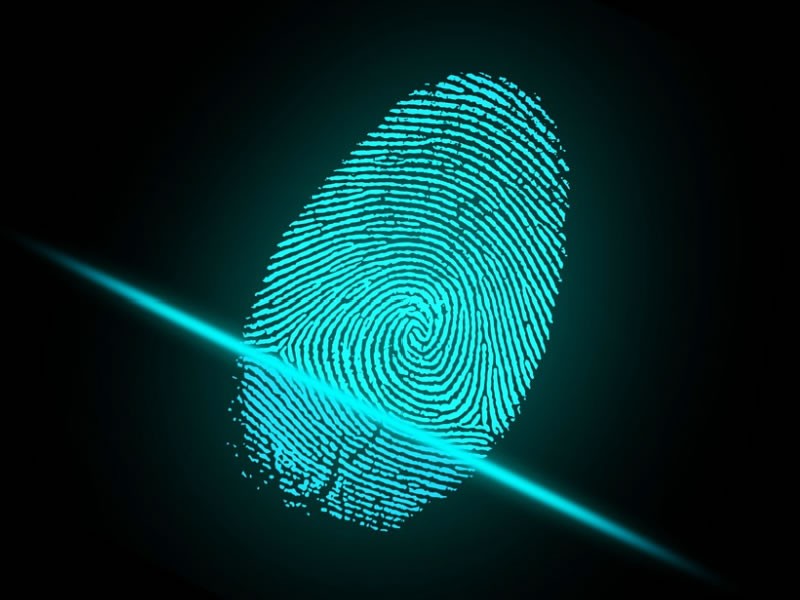Insight Blog
Agility’s perspectives on transforming the employee's experience throughout remote transformation using connected enterprise tools.
7 minutes reading time
(1328 words)
Revolutionizing Identity Verification: Exploring the Latest Technologies and Strategies for Enhanced Security
Revolutionizing Identity Verification: Exploring the Latest Technologies and Strategies for Enhanced Security
Identity verification is more important than ever. As our lives become more digital, the need for secure and efficient identity verification solutions is critical.
Identity verification is more important than ever. As our lives become more digital, the need for secure and efficient identity verification solutions is critical.
The global rise of identity theft fuels the demand for enhanced security measures. Traditional methods of identity verification may no longer be sufficient due to their inherent limitations and vulnerabilities. These outdated approaches can be easily exploited by hackers, leading to significant financial and reputational damage.
From synthetic identity fraud to corporate identity theft, the ability to accurately confirm a person's identity is paramount in cybercrime prevention.
Background on Identity Verification Challenges
Cybercrime and identity theft have become increasingly prevalent as criminals exploit vulnerabilities in traditional identity verification methods. According to a report by The Identity Theft Resource Center, there are more than 420,000 victims in 2022. This is an alarming number, which necessitates the need for stronger identity verification measures.
Traditional identity verification methods, such as passwords and PINs, have been the primary means of securing access to online accounts and services for many years. However, these methods have several limitations and vulnerabilities that make them susceptible to attacks.
Passwords can be easily forgotten, shared, or compromised through phishing scams and data breaches.
The rapid evolution of technology and the growing sophistication of cybercriminals necessitate the development of more secure and efficient end-to-end solutions that verify identities. These advanced solutions ensure that only authorized individuals can access sensitive information. To enhance the security and reliability of your identity verification processes, consider utilizing KYC compliance.
By leveraging advancements in biometrics, blockchain, machine learning, multi-factor authentication, and identity theft protection software, we can move towards a future where identity verification is not only more secure but also more user-friendly and accessible.
Biometric Technologies for Identity Verification
Biometric technologies have emerged as a highly secure and reliable means of identity verification. These methods leverage unique physical or behavioral traits to authenticate users, making it considerably more difficult for cybercriminals to impersonate or steal identities.
Facial Recognition
This technology analyzes the unique characteristics of an individual's face, such as the distance between the eyes or the shape of the cheekbones, to create a digital representation known as a facial signature. This signature is then compared to stored images in a database to verify the individual's identity.
Recent innovations in artificial intelligence and machine learning have led to significant improvements in the accuracy and security of facial recognition systems, reducing the potential for false positives and unauthorized access.
Facial recognition is being increasingly used in a variety of sectors, including banking, travel, and law enforcement. Examples include unlocking smartphones, expediting airport security checks, and assisting in criminal investigations.
Fingerprint Scanning
Advancements in fingerprint scanning technology have enabled the development of faster, more accurate, and more secure scanners. These devices can now capture high-resolution images of fingerprints and quickly match them against stored records.
Fingerprint scanners have become a common feature in many consumer devices, such as smartphones and laptops, as well as security systems in workplaces and public spaces.
Fingerprint scanning offers a high level of security and convenience, as fingerprints are unique to each individual and difficult to replicate. However, some concerns remain regarding the potential misuse of stored fingerprint data and the implications for privacy.
Iris Scanning and Other Emerging Biometric Technologies
Iris scanning technology, which analyzes the unique patterns in an individual's iris, has also shown promise as a secure and reliable identity verification method. Other emerging biometric technologies include voice recognition, palm vein scanning, and gait analysis.
Blockchain-Based Identity Verification
Blockchain technology is also revolutionizing identity verification by providing a decentralized, secure, and transparent approach to managing digital identities.
Blockchain is a distributed ledger technology that enables secure and transparent record-keeping of transactions and data. It operates through a decentralized network of nodes, which collectively validate and store information in a series of linked blocks.
The inherent security features of blockchain, such as its resistance to tampering and its ability to provide a verifiable audit trail, make it a promising solution for improving identity verification processes.
Decentralized identity management systems leverage blockchain technology to give individuals greater control over their data and reduce reliance on centralized authorities. These systems enable users to create, store, and manage their digital identities securely and independently, enhancing privacy and reducing the risk of data breaches.
Machine Learning and Artificial Intelligence in Identity Verification
Role of AI in Improving Verification Accuracy
AI-powered algorithms can analyze vast amounts of data to identify patterns and trends that may indicate fraudulent activity, enabling organizations to take proactive measures to protect against identity theft.
Machine learning models can also be trained to recognize subtle differences between genuine and fake identification documents, such as passports and driver's licenses, improving the accuracy of document verification processes.
Detecting Fraudulent Patterns and Suspicious Behavior
AI systems can continuously monitor user behavior, transactions, and bot access attempts to detect anomalies and potential threats in real time. This can help organizations identify and respond to potential security breaches more quickly and effectively.
By leveraging AI-driven analytics, organizations can gain a deeper understanding of their users and develop more targeted and effective strategies for preventing identity theft and fraud.
Enhancing user experience and system efficiency
AI can be used to streamline the identity verification process, making it faster and more user-friendly. This includes automating background checks, reducing manual input, and providing more accurate results.
By improving the efficiency of identity verification systems, organizations can not only enhance security but also reduce costs and free up resources for other critical tasks.
Identity Theft Protection and Software
Identity theft protection services and software can complement identity verification efforts by providing an additional layer of security and proactive monitoring of users' personal information. These tools are designed to detect potential threats and help individuals respond effectively in the event of identity theft or fraud.
These services typically offer a combination of monitoring, alerts, and recovery assistance to help users stay informed about potential risks and take action when necessary. By providing comprehensive support and resources, identity theft protection services can help individuals minimize the impact of identity theft and regain control of their personal information.
Key Features of Identity Theft Protection Software
- Monitoring and Alerts: Many identity theft protection tools continuously monitor various data sources, such as credit reports, public records, and dark web activity, to detect signs of unauthorized use of personal information. Users receive alerts when potential threats are identified, allowing them to take action and prevent further damage.
- Recovery and Insurance: In the event of identity theft, some services offer assistance with the recovery process, including guidance on filing police reports, contacting creditors, and disputing fraudulent charges. Additionally, many services provide identity theft insurance, which can help cover the costs associated with recovering from identity theft, such as legal fees or lost wages.
- Privacy Tools: Some identity theft protection software also includes features that help users enhance their online privacy, such as password managers, encrypted storage, and secure browsing tools.
Selecting the Right Service for Your Needs
When choosing an identity theft protection service, it often comes down to the two big players: Identity Guard and LifeLock. Both companies offer comprehensive monitoring, alerts, and recovery assistance, as well as additional privacy tools and features tailored to individual needs.
To make an informed decision, users should compare the features, pricing, and customer reviews of these leading services and consider factors such as the level of protection required, budget, and any specific personal requirements.
It is also essential to ensure that the chosen service complies with relevant data protection regulations and maintains a strong commitment to user privacy and security.
Wrapping up
Revolutionizing identity verification is crucial for enhancing security and preventing identity theft in the digital age. By adopting cutting-edge technologies and strategies, such as biometrics, blockchain, artificial intelligence, and identity theft protection software, organizations can create more secure, efficient, and user-friendly verification processes.
Categories
Blog
(2640)
Business Management
(325)
Employee Engagement
(212)
Digital Transformation
(177)
Growth
(120)
Intranets
(119)
Remote Work
(61)
Sales
(48)
Collaboration
(37)
Culture
(29)
Project management
(29)
Customer Experience
(26)
Knowledge Management
(21)
Leadership
(20)
Comparisons
(6)
News
(1)
Ready to learn more? 👍
One platform to optimize, manage and track all of your teams. Your new digital workplace is a click away. 🚀
Free for 14 days, no credit card required.













